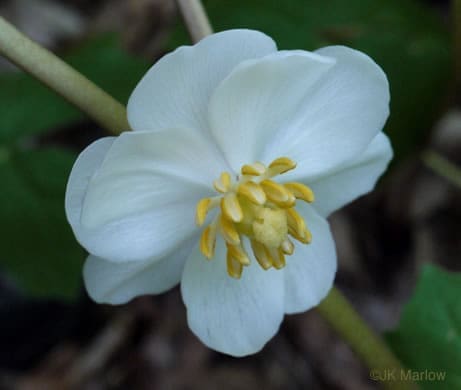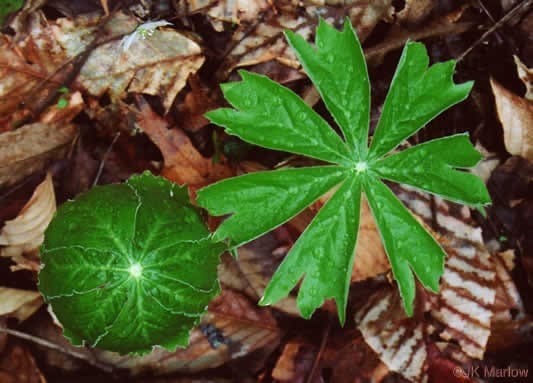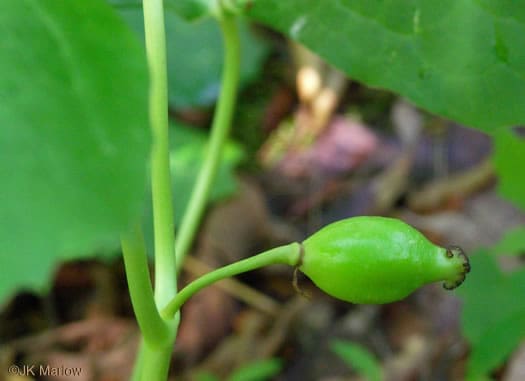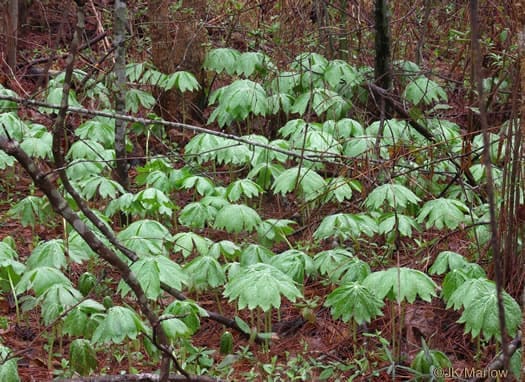Berberidaceae
May-apple
Podophyllum peltatum
Synonyms
Podophyllum peltatum var. annulare
Podophyllum peltatum var. peltatum
Other Common Names
American mandrake
Plant Type
Herbaceous Wildflower
Life Cycle
Perennial
Typical Size
1-1.5 ft. tall
1 ft. wide
Tolerant of
Deer, Drought
Inolerant of
Poorly Drained Soil, Direct Afternoon Sun
Propagation
By seed, By division
Plant Propagation Notes
Seeds require three months of moist cold stratification to germinate.
Plant Planting Notes
Plant in an area that allows this plant to spread.
Plants/Diseases
No significant disease or pest issues. May experience rust on leaves.
Wildlife Benefits
Nectar/pollen source for pollinating insects, Fruit/seeds for birds
Leaves
Leaves opposite, usually only one or two; orbicular with deep lobes.
Flowers
Solitary, cup-shaped flowers; fragrant.
Fruit
1-3 inch round berry.
Toxicity
All parts of the plant are highly toxic if ingested except for fully ripe fruit.
Edibility
Fully ripe fruit (yellow and soft) is edible and can be used for jams and jellies.
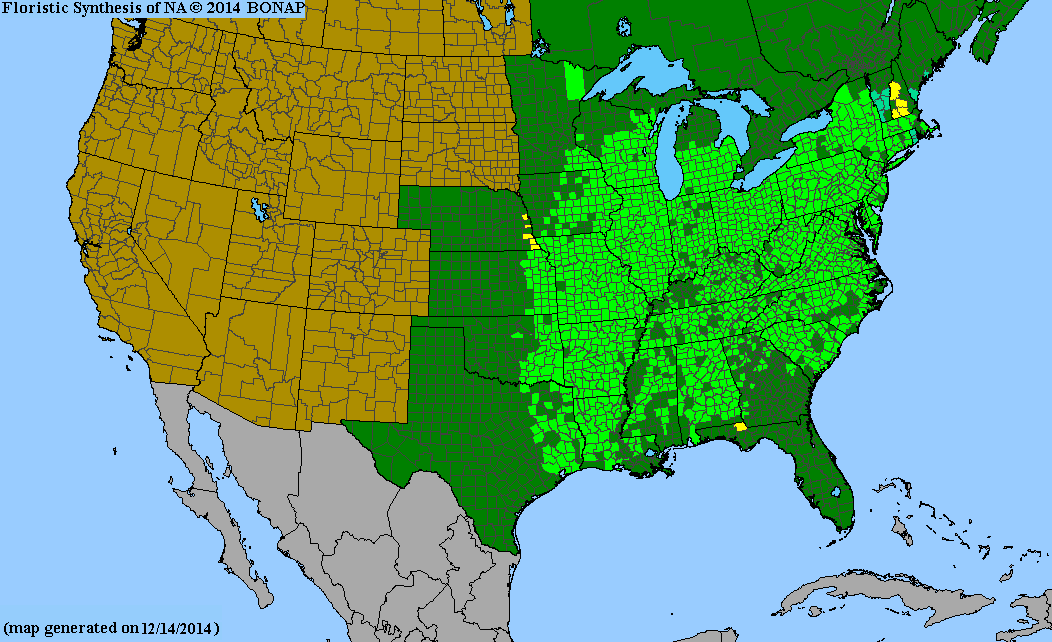
USDA Hardiness Zones
3, 4, 5, 6, 7, 8
Light Exposure
Part Sun/Shade, Full Shade
Soil Moisture
Medium
Soil Drainage
Well-drained
Soil pH
Acidic (less than 6.0)
Native in South Carolina?
Yes
Plant Native Habitat
Forests, bottomlands, slopes, and pastures with rich acidic soils.
Global Conservation Status (NatureServe)
Secure (G5)
Federal Conservation Status (USFWS)
Not Listed
Distribution Notes
Common throughout South Carolina

